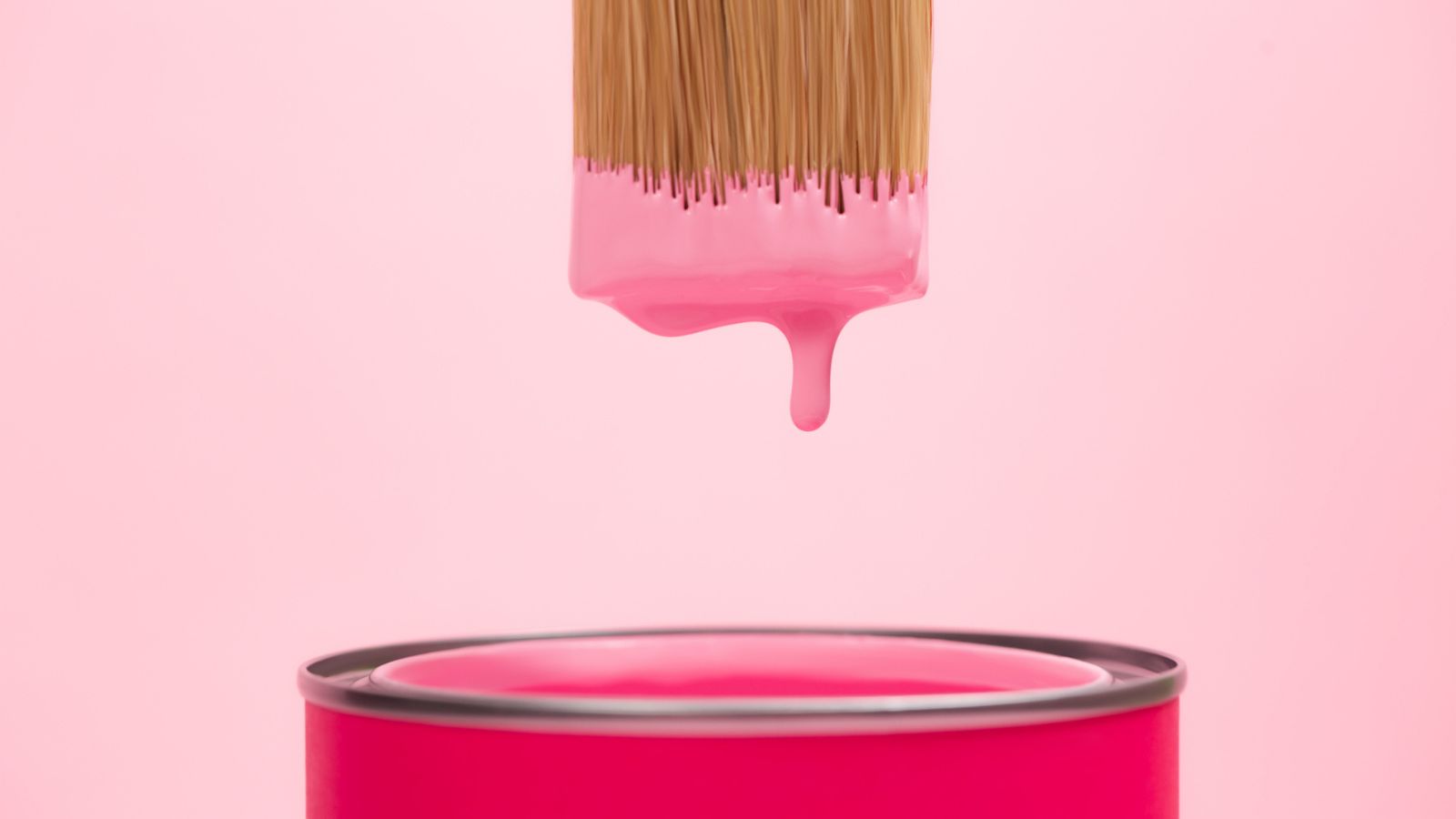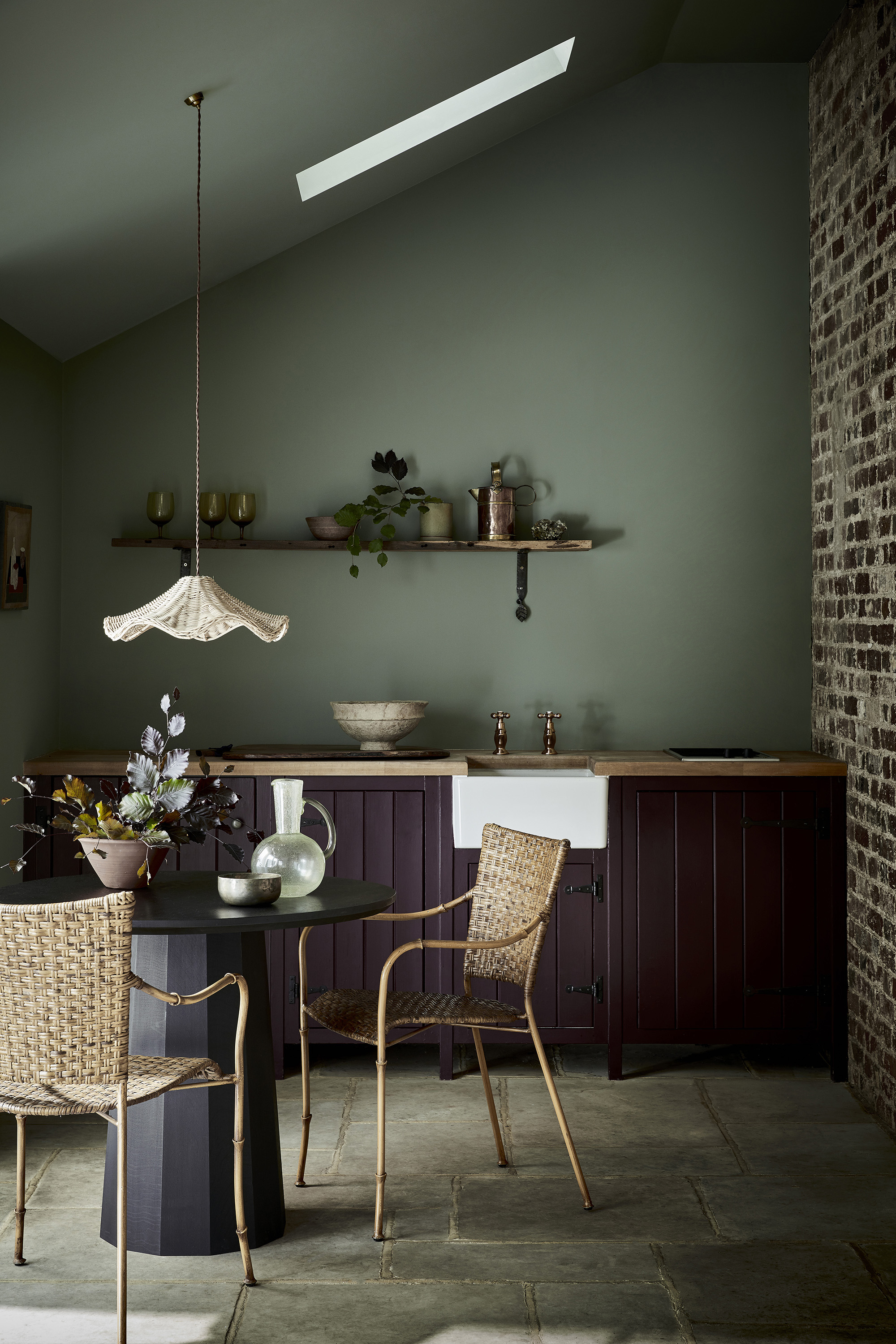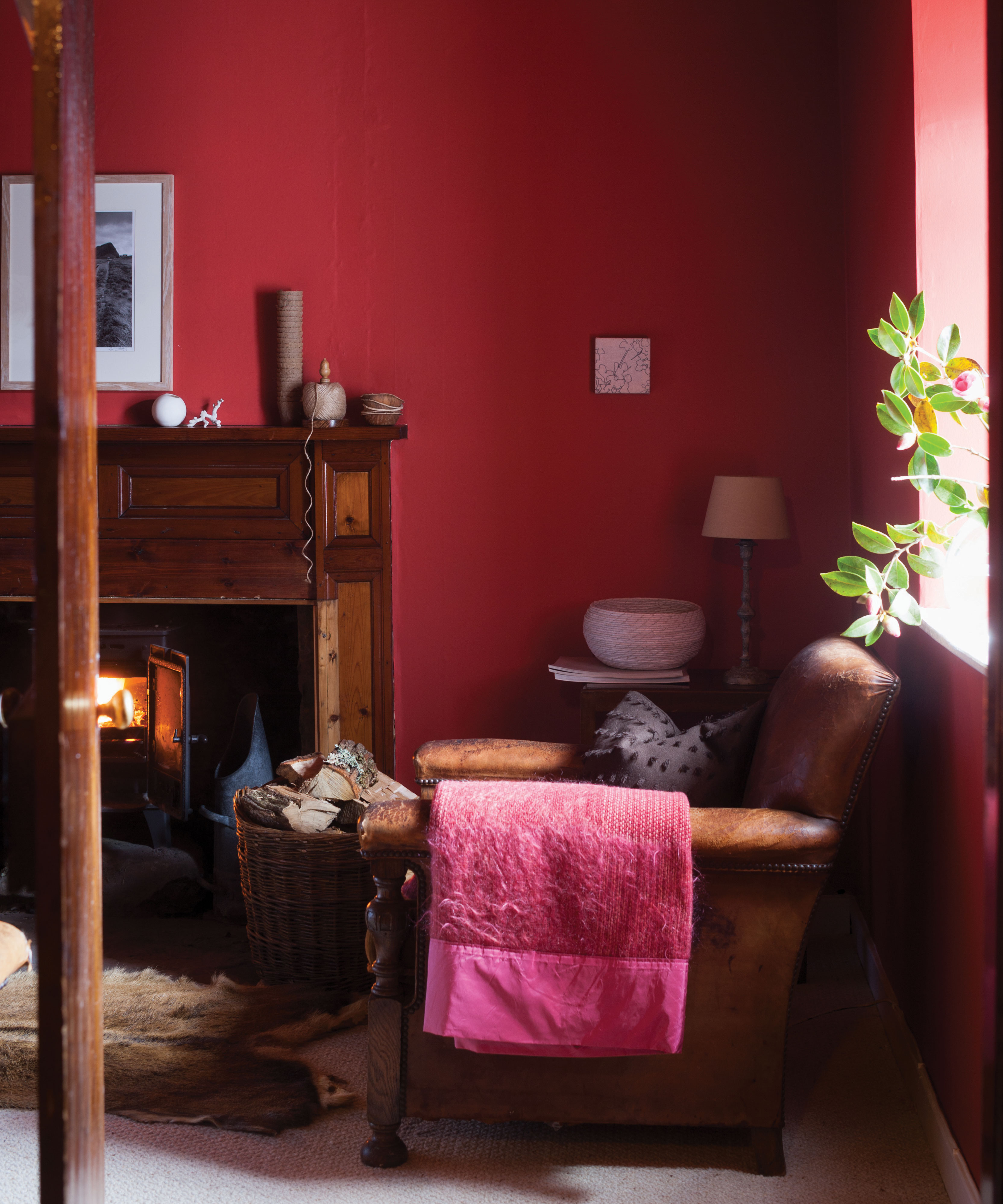How do you fix paint drips? These expert tips will give you a flawless finish
If you made a mistake on your recent DIY project, don't panic. These expert tips on fixing paint drips will ensure a pro-worthy repair job


Paint drips are an inevitable part of any DIY project, but how do you clean them up neatly?
While the best solution is prevention, you can fix paint drips when they are still wet and even when they are dry. A paint drip will usually occur when there's too much paint on the brush or roller, or if the paint is too runny.
So before you start painting a wall or trim, discover how to fix paint drips for a professional finish.
How do you fix paint drips?
First of all, don't worry – paint drips are usually easy to fix. The expert tips below will ensure that nobody will know it ever happened.
How to fix a paint drip before it dries

If you spot a paint drip forming while the paint is still wet, it's prudent to fix it straight away to avoid any inconvenience later on.
'If the paint is still wet, just take your brush and stroke across the dripping paint,' says Sarah Lloyd, Interiors and Paint Expert at Valspar (Valspar.co.uk for UK residents). 'Do this in the same direction as the rest of the paint and smooth it all out until it blends it with the rest of the wall.'
However, do make sure that you only do this if the paint has not yet started drying, or you may end up creating a bigger problem.
Design expertise in your inbox – from inspiring decorating ideas and beautiful celebrity homes to practical gardening advice and shopping round-ups.
An expert at paint company Frenchic, says: 'Trying to brush out a drip once the paint surface has started to dry will not work and can make a small problem much bigger by spreading the partially dried paint.
'Leave it to dry completely if it's started going tacky – and remember this may take longer than usual as the paint is thicker.'
How to fix paint drips that have dried

1. Sand the drip down
Learning how to fix paint drips is a useful paint trick to have under your belt. The best way to start? Use sandpaper to smooth it down.
'If the drip is small and shallow then you may well be able to sand it away,' says Frenchic.
'Try a fine to medium sandpaper and see how you get on. Keep the direction of sanding along the length of the drip rather than across – this will minimize the effect on surrounding paint.'
And Sarah Lloyd adds: 'We recommend starting with a 120 – 150 grit sandpaper to sand down the raised edges and smooth out the bumpy bits. You just need to do this very lightly until the raised edges are smoothed down. If you sand too hard, you might end up taking off the flat paint underneath.'
2. Use a scraper blade for larger drips
For larger or more stubborn drips, a clean scraper blade, or similar, should do the trick.
'Remove as much of the drip as you can and then smooth out any remnants with sandpaper – again following the length of the blemish as above,' says Frenchic. 'If the paint is still a little tacky underneath, you may find it easier if you allow more time for it to dry before sanding.'
3. Apply filler if needed
This step may not be necessary but, if you find that the process of removing dried drips has resulted in deep scuffs and scrapes then you may need to use a filler to level up the surface.
Frenchic says: 'Choose a filler that is appropriate to the surface you have painted (or a multi-purpose product). Prepare the area by sanding to smooth before applying as per its instructions. Sand again lightly once dried and paint over.
'Some paints work best over filler if a primer is used. Choosing a self-priming paint means you don’t have to worry about adhesion. However, some fillers can be porous and absorb paint which can lead to an uneven finish – if this happens, you may need to sand lightly again before applying a second coat of paint.'
4. Touch in with paint
Once you have sanded the drip down and filled the surrounding area (if that step was necessary), it's time to touch in the area with paint.
'You will need to use the same method of painting as you did when you first decorated,' advises Valspar's Sarah Lloyd. 'So, if you painted the wall with a roller last time, use a roller again here (unless the repair is really, really small).
'Then, when it comes to technique, feathering helps blend the paint so there’s not an obvious repair. This is when you apply paint in the middle of the repair and use long light strokes working outwards and painting slightly beyond. Use a small amount of paint at a time until you’ve covered the damage. This helps blend the paint in for a seamless repair.'
Frenchic adds: 'Don’t forget to remove any sanding dust with a clean, slightly damp cloth first!'
How to avoid paint drips

The last thing you want to see are paint drips ruining the aesthetic. One of the best ways to keep your DIY projects paint drip-free is prevention. Frenchic reveals a few tips for avoiding paint drips in the first place below.
- Stir your paint thoroughly: 'As basic as it sounds, a really good stir will make all the difference,' says Frenchic. 'Shaking the tin is not anywhere near as effective. Paint can settle over time, making it thinner at the top of the tin. Using a wide implement is best to make sure you incorporate all the ingredients, right down to the bottom of the tin.'
- Use dry brushes/rollers: 'Rinsed out equipment can retain a surprising amount of moisture,' explains Frenchic. 'If you use damp tools, the moisture can result in thinned paint, leading to drips. Rollers are particularly notorious for this so squeeze them out really thoroughly before leaving to dry – and check before reusing.' She adds: 'Leave brushes flat or with bristles hanging down if possible while they dry to prevent water being trapped in the metal ferrule.'
- Size matters: Frenchic says: 'Using a brush/roller that is too big can result in excess paint collecting on or around edges and in recesses, leading to drips especially for things like spindles, beading/panelling and where walls meet woodwork. Always cut-in with a suitable sized brush around the edges of areas you will be rolling.'
- Less is more: 'Another top tip is to avoid overloading your brush/roller with paint and then trying to stretch it out,' comments Frenchic. 'This tends to lead to uneven coverage which can mean drips form on walls and builds up around detailed areas. Use your brush to smooth out paint that builds up on edges and ledges, before it can form drips. Start in corners and smooth away from there. Keep pressure light and even, using longer strokes.'
- Be vigilant: Finally, says Frenchic: 'Try to get in the habit of checking edges and ledges (and around corners) as you go because it is easiest to smooth out a drip before it has started to dry. If, despite your best efforts, you spot that drips have appeared and you can’t smooth them with a brush because they have dried, all is not lost. You can deal with them successfully with the right approach.'
FAQs
Can you sand down paint drips?
'Yes, you can sand down paint drips,' says Sarah Lloyd, Interiors and Paint Expert at Valspar. 'Sand down the edges of the paint to ensure they’re nice and smooth against the wall.
'Then, use sugar soap then clean water to get rid of grease, grime and dirt.
'Once the wall is dry, apply your first layer of paint, starting in the middle and feathering out towards the edges. Let the first coat dry and review to see if it needs another.'
How do you remove hard paint drips?
'You can remove hard paint drips by sanding them away if they are small or shallow,' says Frenchic.
'For larger, or more prominent drips, a clean scraper blade or similar is the best way to start by removing the majority of the hardened drip. The sand the remainder with a fine to medium sandpaper.'
She adds: 'Try to avoid damaging the surrounding paintwork to minimize the damaged area. Sanding along the length of the drip mark will help this. Remove any dust and repaint via the original method of application to reduce the chance of a different finish – which could stand out.'
How do you get rid of paint drips?
'Try to get into the habit of watching out for paint drips while you are in the process of painting because, brushing or rolling away a wet drip is the quickest and easiest way to get rid of paint drips,' says Frenchic.
'For dried paint drips, you may be able to sand away if they are not too prominent. For larger drips, use a clean scraper blade to remove the majority and then follow by sanding smooth.
'Try to avoid damaging the surrounding paintwork to minimize the damaged area. Sanding along the length of the drip mark will help this. Remove any dust and repaint via the original method of application to reduce the chance of a different finish.'

Ruth Doherty is an experienced digital writer and editor specializing in interiors, travel and lifestyle. With 20 years of writing for national sites under her belt, she’s worked for the likes of Livingetc.com, Standard, Ideal Home, Stylist and Marie Claire as well as Homes & Gardens.